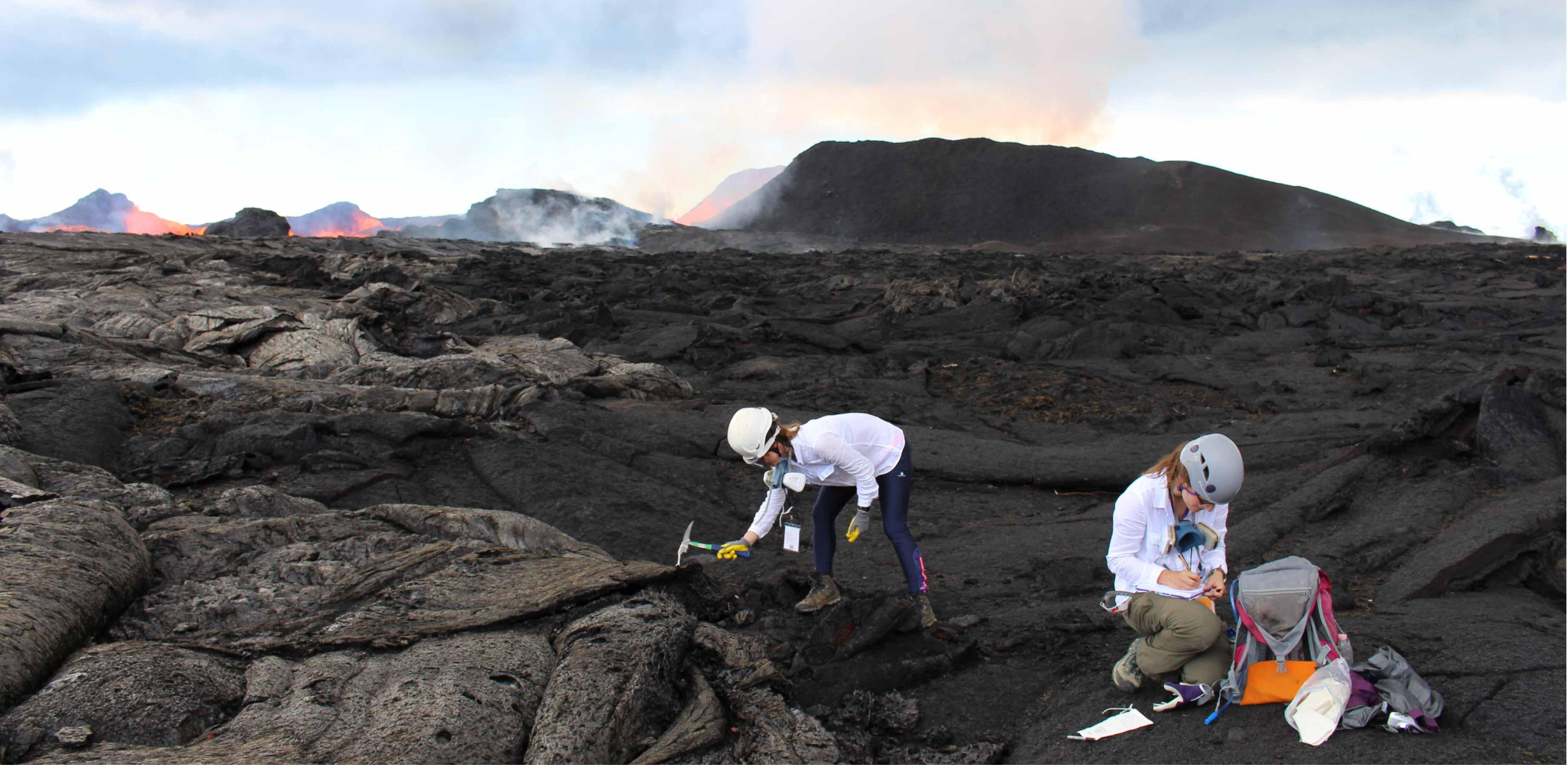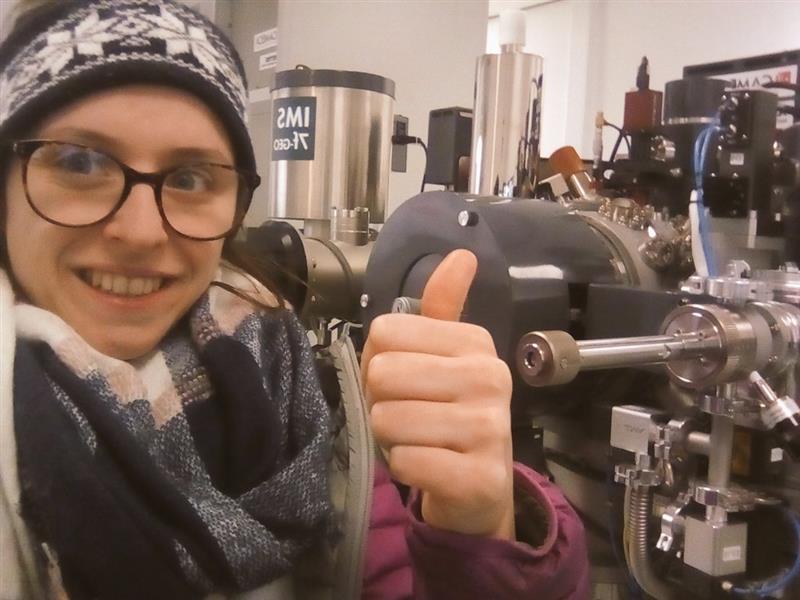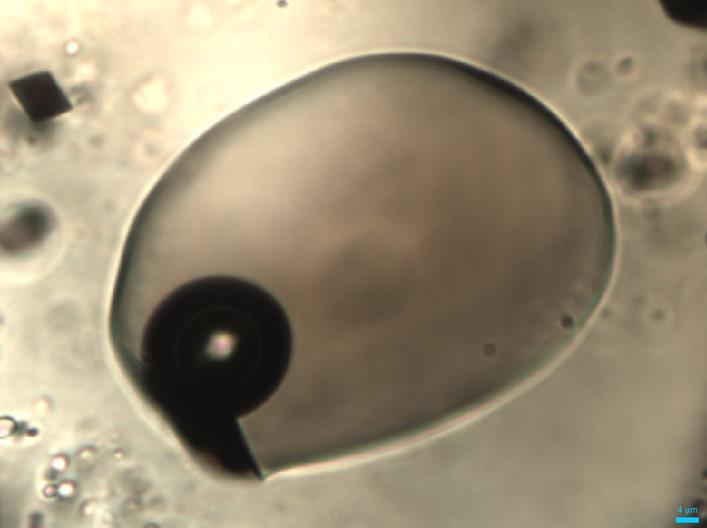
Submitted by Dr C.M. Martin-Jones on Tue, 09/02/2021 - 10:35
Pockets of frozen magma and gas trapped in the crystals erupted from Kīlauea are allowing scientists to see deep into its plumbing system - a below-ground view that could help volcanologists get a better handle on what triggered the colossal 2018 eruption.
The 2018 eruption of Kīlauea volcano on the Island of Hawai’i was the largest in centuries, flooding the eastern edge of the island with roughly a cubic mile of lava. The sudden torrent of activity was a surprise to scientists, even though Kīlauea is one of the world’s most active volcanoes.
Kīlauea has been erupting from the Puʻu ʻŌʻō vent in the eastern rift zone almost continually since 1983. But, after several decades of predictable activity, the volcano suddenly began to swell in March and April 2018 – signaling that the volcano’s magma chambers were starting to become pressurized. What caused the massive outpouring of lava that followed, and why this sudden switch in behavior?
Dr Penny Wieser was one of a team of volcanologists from the University of Cambridge who headed out to Kīlauea in 2018 to assist with an aerosol monitoring campaign. Wieser not only had the opportunity to witness the eruption first hand, but also collect samples of an unusual lava.
One of the big questions for volcanologists is not just what triggered the eruption, but why it ended so abruptly. “We had just finished taking down our aerosol monitoring stations, and were mourning the fact we wouldn’t be collecting any more data, when we got a text saying that the eruption had stopped. We thought it was a joke at first - it was so abrupt, we’d been watching the lava channel just a few days earlier, and it was in full flow…”
Wieser’s findings, which have recently been published in Geochemistry, Geophysics, Geosystems, are helping scientists understand why the 2018 episode was so unusual by probing deep into the volcano’s underground plumbing system.
Wieser and co-authors used tiny blobs of once molten rock, or melt inclusions, embedded in olivine crystals within the 2018 lava, to infer that the magma came from two chambers at different depths. The confirmation that a second, deeper reservoir was involved may explain why the 2018 eruption was so large and sustained.
It also sheds light on what triggered this outpouring of lava, “something must have changed in the plumbing system – maybe new magma being injected - to disturb the crystals stored in this deep reservoir and bring them up to the surface” said Wieser, who is now a postdoctoral researcher at Oregon State University.
Probing Kīlauea’s hidden depths
Scientists have known from geophysical and seismic evidence collected since the 1970s that Kīlauea is probably fed by two reservoirs of magma, one located at roughly 1-2 km and another at 3-5km depth. But to corroborate this, volcanologists needed direct evidence from the lavas – which carry a chemical signature of their origin and journey to the surface.
“It had been thought that the 2018 eruption was fed mainly from the shallower reservoir, but when we started looking at the crystals in the erupted lava we saw they in fact came from two magma reservoirs.” said Wieser.
Wieser and the team think that a fresh influx of magma from the mantle or a decline in the eruption rate at Pu'u 'Ō'ō, could have pressurized the system, freeing crystals which had settled to the bottom of this deeper reservoir, and ultimately triggered the spectacular 2018 eruption.
“Change the pressure inside the plumbing system, perhaps by injecting some new magma, and the volcano can be pushed to erupt – almost like an airlock in your taps at home” said Wieser. Something like this would explain measured inflation of Kīlauea in the months preceding the eruption.
One possible suggestion for the abrupt end to the eruption is that the shallower reservoir had dropped below the level of the conduit connecting the summit and the 2018 eruption site. But the confirmation that there is another reservoir might have allowed the eruption to go on longer, accounting for the very large volumes erupted in 2018.
A volcanologist’s barometer
Melt inclusions are like barometers – their carbon dioxide and water content relates closely to the pressure they were under, and therefore their depth in the crust, when they were trapped. Volcanologists often use the chemical makeup of melt inclusions to calculate the depth of the magma reservoir beneath a volcano.
Most studies have only measured the melt phase of the inclusion – the portion that was once molten magma. Some studies have also analyzed the tiny vapor bubble which forms inside the inclusions as it cools and contracts. But the new study is the first to measure both the quenched magma and bubble side by side in more than a hundred melt inclusions.
The team’s findings are thanks to a unique combination of microanalysis techniques, which allowed them to accurately constrain the total carbon content of the inclusion and understand how carbon dioxide passes between the melt and the bubble. The comparison showed that 90% of the carbon dioxide was stored in the gas bubble.
“It was becoming more apparent, from studies elsewhere in the world, that most of the carbon dioxide in melt inclusions is probably stored in that vapor bubble” said Wieser, “if we had used only the traditional method we’d have underestimated the gas content and instead calculated that magma was supplied from only 400 meters depth - that’s too shallow for a magma chamber.”
Wieser was able to pick out the differences in carbon storage between the bubble and melt phases using raman spectroscopy, which measures the interaction between laser light and a sample to provide chemical information at a microscopic scale, in combination with the more commonly used chemical analysis technique, secondary ion mass spectrometry.
These minute gas bubbles are providing volcanologists with a window into the hidden depths of how volcanoes work. For Wieser, accurate measurements of melt inclusion vapor bubbles could soon help scientists understand volcanic systems worldwide, “there’s growing evidence that melt inclusion vapor bubbles hold huge amounts of carbon in a wide variety of volcanic systems, and raman spectroscopy is going to become an increasingly important tool for volcanologists looking to mine their detailed information”.
Wieser, P. E., Lamadrid, H., Maclennan, J., Edmonds, M., Matthews, S., Iacovino, K., ... & Ilyinskaya, E. Reconstructing Magma Storage Depths for the 2018 Kı̄lauean Eruption from Melt inclusion CO2 Contents: The Importance of Vapor Bubbles. Geochemistry, Geophysics, Geosystems, (2020). DOI: https://doi.org/10.1029/2020GC009364


